Introduction to the Golden Buddha: Bangkok’s Spiritual Giant
Standing at the heart of bustling Bangkok, the Golden Buddha is more than just a masterpiece of ancient craftsmanship—it is a profound spiritual symbol and a testament to Thailand’s rich cultural heritage. Visitors from around the world are drawn to its serene presence, glittering surface, and the tranquil atmosphere that surrounds its temple home. As we begin our exploration, we invite you to imagine the play of sunlight on solid gold, the gentle scent of incense, and the quiet reverence that fills the air around this spiritual giant.

What Is the Golden Buddha?
The Golden Buddha is a remarkable statue crafted entirely from solid gold, depicting the Buddha in the traditional seated meditation posture. Revered as the world’s largest solid gold Buddha image, it weighs several tons and serves as a potent symbol of faith for millions of Buddhists. Its existence reflects both artistic genius and religious devotion, making it an essential highlight for anyone interested in the spiritual and cultural life of Thailand.

Where Is the Golden Buddha Located?
This awe-inspiring statue resides in Wat Traimit, a historic temple situated in the Chinatown district of Bangkok. The temple’s location makes it easily accessible for visitors exploring the city’s vibrant neighborhoods. Just steps away from busy markets and lively streets, the Golden Buddha offers a peaceful sanctuary amid urban energy, inviting reflection and admiration.
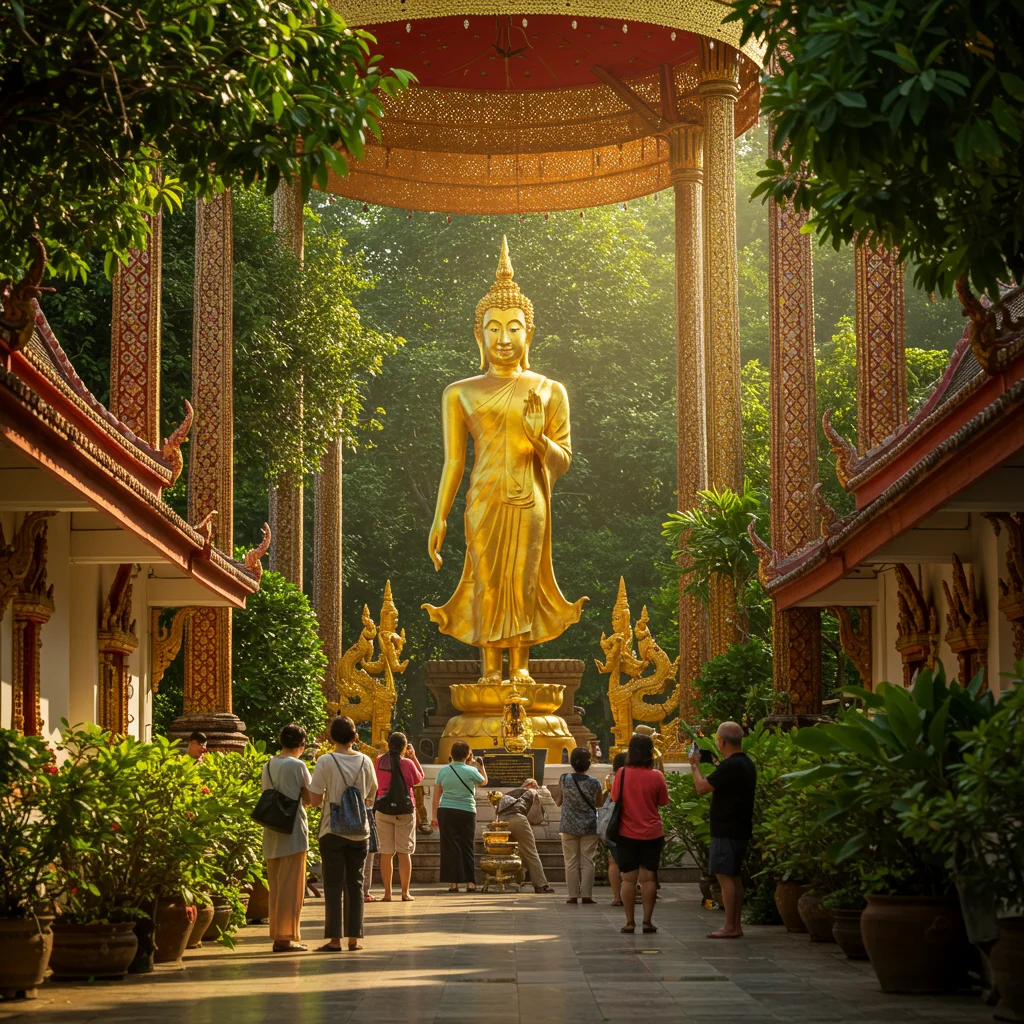
The History of the Golden Buddha
The story of the Golden Buddha is a fascinating journey through time, marked by mystery, resilience, and rediscovery. Over centuries, the statue bore witness to changing dynasties, wars, and cultural transformations, all while hidden beneath a humble exterior.

How Old Is the Golden Buddha?
Historical analysis suggests that the Golden Buddha dates back to the 13th–15th centuries, during the Sukhothai period. This era is celebrated for its flourishing Buddhist art and architecture, and the statue’s style aligns closely with the aesthetics of that golden age. For centuries, the statue’s true nature remained concealed, surviving wars and upheaval by blending in with more modest surroundings.
Discovery of the Golden Buddha
For generations, the statue was believed to be a simple plaster Buddha. Its discovery as a treasure of solid gold came as a complete surprise, revealing the ingenuity of its creators and the lengths taken to protect it. The moment of revelation transformed both the temple and the spiritual landscape of Bangkok.
The Hidden Treasure: Story Behind Its Concealment
To safeguard the statue during times of conflict—especially during the Ayutthaya period, when the city was threatened by invasions—the Golden Buddha was carefully covered in plaster and stucco. This disguise protected it from theft and destruction, allowing it to survive undetected for centuries.
Uncovering the Golden Buddha: The 1955 Accident
The statue’s golden identity was revealed in 1955, when workers attempted to move it to a new building. During the process, the plaster casing cracked, exposing the gleaming gold beneath. This accidental discovery shocked the world and brought international attention to Wat Traimit, forever changing the temple’s destiny.
Origins and Craftsmanship
The origins and artistry of the Golden Buddha provide insight into the skill of its unknown creators. Every detail, from facial expressions to intricate folds of the robe, reflects a deep understanding of Buddhist iconography and Sukhothai aesthetics.
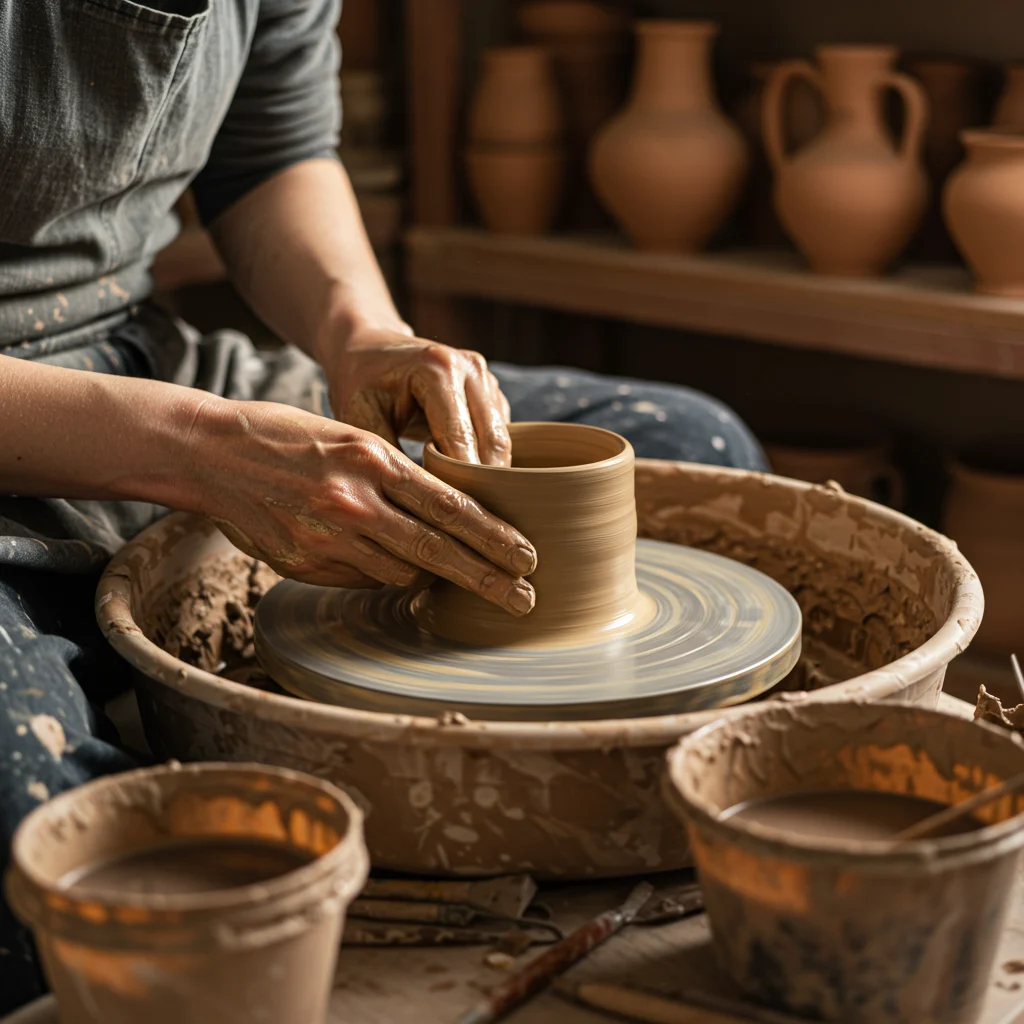
Who Created the Golden Buddha?
While the names of the original artisans remain lost to history, scholars attribute the statue’s creation to master craftsmen of the Sukhothai Kingdom. Their expertise in metallurgy and religious art produced a work of enduring beauty and significance.
Sukhothai Artistry: The Influence on Design
The statue’s graceful lines, serene expression, and proportionate features are hallmarks of Sukhothai artistry. This style emphasizes elegance, spiritual calm, and a subtle sense of movement, all of which are evident in the Golden Buddha’s form.
Materials and Techniques Used
The statue is composed of nine distinct segments of solid gold, expertly joined together. Advanced casting and welding techniques allowed artisans to create a seamless, monumental figure that has withstood the test of time. The surface’s lustrous finish continues to catch the light, captivating all who gaze upon it.
Why Was the Golden Buddha Covered in Plaster?
Covering the statue in plaster was a strategic decision to protect it from potential looting during periods of instability. This simple yet effective disguise ensured the statue’s survival, preserving a priceless piece of Thailand’s spiritual heritage for future generations.
Physical Description and Dimensions
The sheer size and presence of the Golden Buddha are immediately striking. Visitors often describe a sense of awe upon entering the temple’s main hall and encountering the statue’s radiant glow.

How Tall and Heavy Is the Golden Buddha?
The statue stands approximately 3 meters (almost 10 feet) tall and weighs an astonishing 5.5 tons (about 12,000 pounds). Its imposing scale makes it one of the most significant Buddhist images in the world, both artistically and spiritually.
Details of the Buddha’s Features
Upon closer inspection, the Golden Buddha reveals intricate details: delicately arched eyebrows, a gentle smile suggesting inner peace, and precise folds in the robe that seem almost lifelike. The statue’s head is crowned with a flame-like ushnisha, symbolizing spiritual enlightenment. The craftsmanship reflects both technical mastery and deep reverence for Buddhist tradition.
The Symbolism Behind the Golden Buddha
The Golden Buddha is not only a work of art, but also a profound symbol. Its meaning resonates with devotees and visitors alike, offering lessons in impermanence, generosity, and spiritual aspiration.

What Does the Golden Buddha Represent in Buddhism?
In Buddhist belief, the statue embodies the Buddha’s teachings on detachment, compassion, and the path to enlightenment. Its posture—seated in meditation—invites contemplation and mindfulness, while its presence fosters an atmosphere of peace and respect.
Religious Significance for Thai Buddhists
For Thai Buddhists, the Golden Buddha is a focal point for worship and merit-making. Offerings of flowers, incense, and prayers are common, especially during significant religious festivals. The statue serves as a reminder of the country’s spiritual roots and the enduring relevance of Buddhist values.
Symbolism of Gold in Buddhist Culture
Gold is revered in Buddhist culture as a symbol of purity, enlightenment, and incorruptibility. The Golden Buddha’s shimmering surface reflects the inner light that practitioners seek to cultivate through meditation and virtuous living.
The Golden Buddha and Thai Identity
The statue holds a special place in the hearts of Thai people, representing national pride and cultural continuity. Its story is woven into the fabric of local identity, inspiring artists, writers, and everyday citizens alike.

How Has the Statue Influenced Thai Culture?
The Golden Buddha has inspired countless works of art, from traditional paintings to modern sculpture. It is a frequent subject of literature, poetry, and even film, serving as a symbol of hope and resilience. Its image appears in educational materials and popular media, reinforcing its role as a cultural touchstone.
National Pride and Heritage
As a unique survivor of turbulent times, the statue is a powerful emblem of Thai heritage. It reminds citizens of their shared history and the enduring strength of their spiritual traditions. Ceremonies and public celebrations often feature references to the Golden Buddha, reinforcing its unifying role.
Golden Buddha in Thai Art and Literature
Writers and artists have long drawn inspiration from the statue, weaving its image into tales of faith, perseverance, and transformation. Its story often appears alongside other legendary monuments, such as Istanbul’s Blue Mosque, as part of broader discussions on sacred architecture and world heritage.
Wat Traimit: Home of the Golden Buddha
Wat Traimit, formally known as Wat Traimit Withayaram Worawihan, serves as the guardian of the Golden Buddha. The temple’s serene grounds and elegant architecture provide a fitting backdrop for such a revered artifact.

Overview of Wat Traimit Temple
Located at the edge of Chinatown, Wat Traimit is a respected center of worship and a popular destination for both locals and tourists. Its gleaming white and gold façade, crowned by a multi-tiered roof, creates a striking impression against the city skyline.
What Else Can You See at Wat Traimit?
Beyond the Golden Buddha, the temple complex features a museum that explores the statue’s dramatic history, as well as exhibits on Chinese-Thai culture and the development of Bangkok’s Chinatown. Visitors can also admire smaller shrines, tranquil gardens, and beautiful murals that add depth to the experience.
Temple Architecture and Layout
Wat Traimit’s architecture blends traditional Thai elements with modern enhancements. The main hall housing the Golden Buddha is elevated, accessible by a grand staircase. Ornate carvings and gilded decorations adorn the temple, creating an atmosphere of reverence and beauty at every turn.
Visiting the Golden Buddha: Practical Information
Planning a visit to the Golden Buddha requires some knowledge of logistics, etiquette, and timing. These details help ensure a respectful and rewarding experience for all guests.
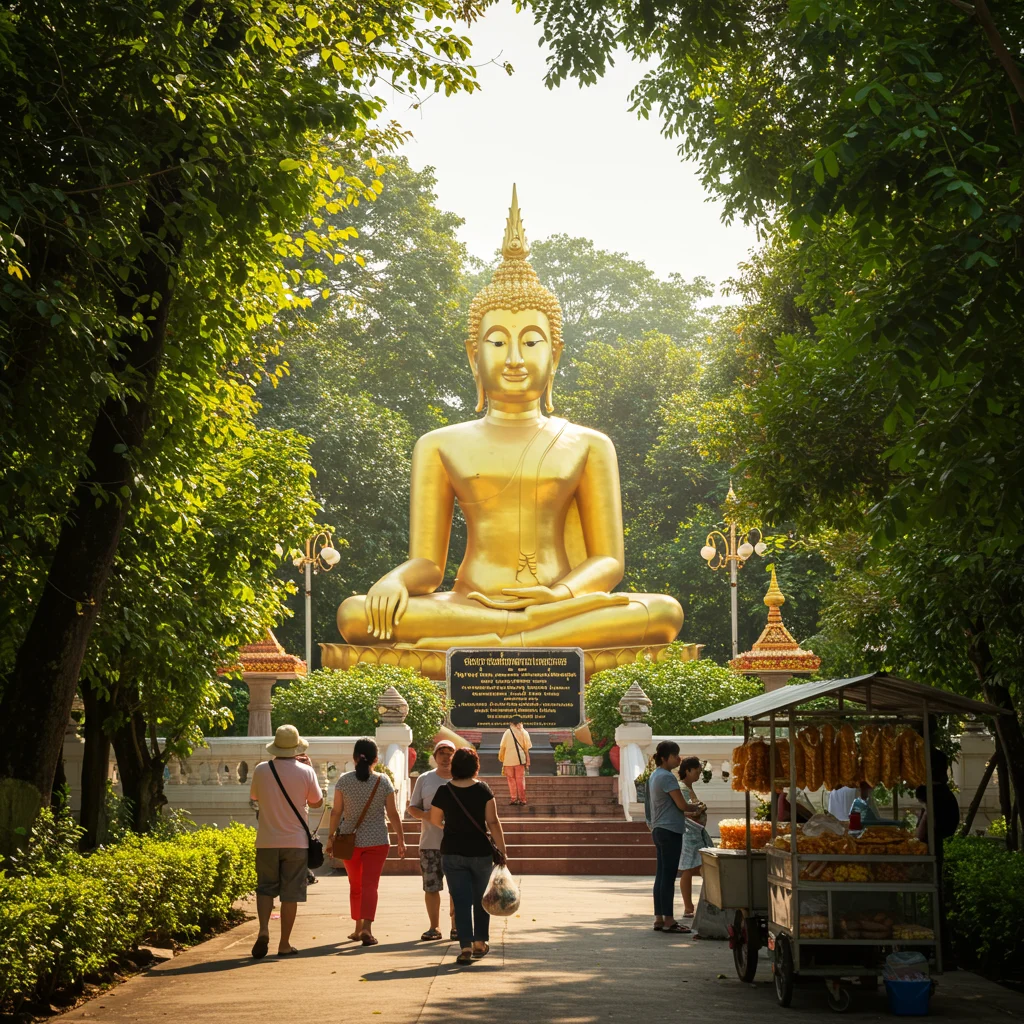
How to Get to Wat Traimit
Wat Traimit is conveniently located near Hua Lamphong MRT station, making it easily accessible by public transport. Taxis and tuk-tuks are also available, and the temple is a short walk from the main roads of Chinatown. For those eager to find tours, many guided experiences include stops at the Golden Buddha alongside other Bangkok highlights.
Opening Hours and Admission Fees
The temple is typically open daily from 8:00 AM to 5:00 PM. Admission fees are modest, with discounts often available for children and seniors. We recommend checking the official website or plan your trip in advance for the most up-to-date information.
Dress Code and Visitor Etiquette
Visitors are expected to dress modestly, covering shoulders and knees, and to remove shoes before entering temple buildings. Quiet voices and respectful behavior are appreciated, especially during ceremonies and prayer times. Photography is generally permitted, but always observe posted signs and staff instructions.
Best Times to Visit
The temple is busiest during weekends and religious holidays. For a more peaceful experience, visit in the early morning or late afternoon, when the sunlight casts a warm glow on the statue and the crowds are thinner.
Tips for a Meaningful Visit
- Bring a light shawl or scarf to cover up as needed.
- Participate in merit-making rituals, such as lighting incense or offering flowers.
- Take time to sit quietly and reflect on the statue’s history and symbolism.
- Consider hiring a local guide for deeper insight.
Experiencing the Golden Buddha: What to Expect
Visitors often describe a sense of tranquility and reverence upon entering the main hall. The atmosphere is calm, punctuated by the soft murmur of prayers and the gentle scent of incense. Whether you are a spiritual seeker or an admirer of art, the experience leaves a lasting impression.
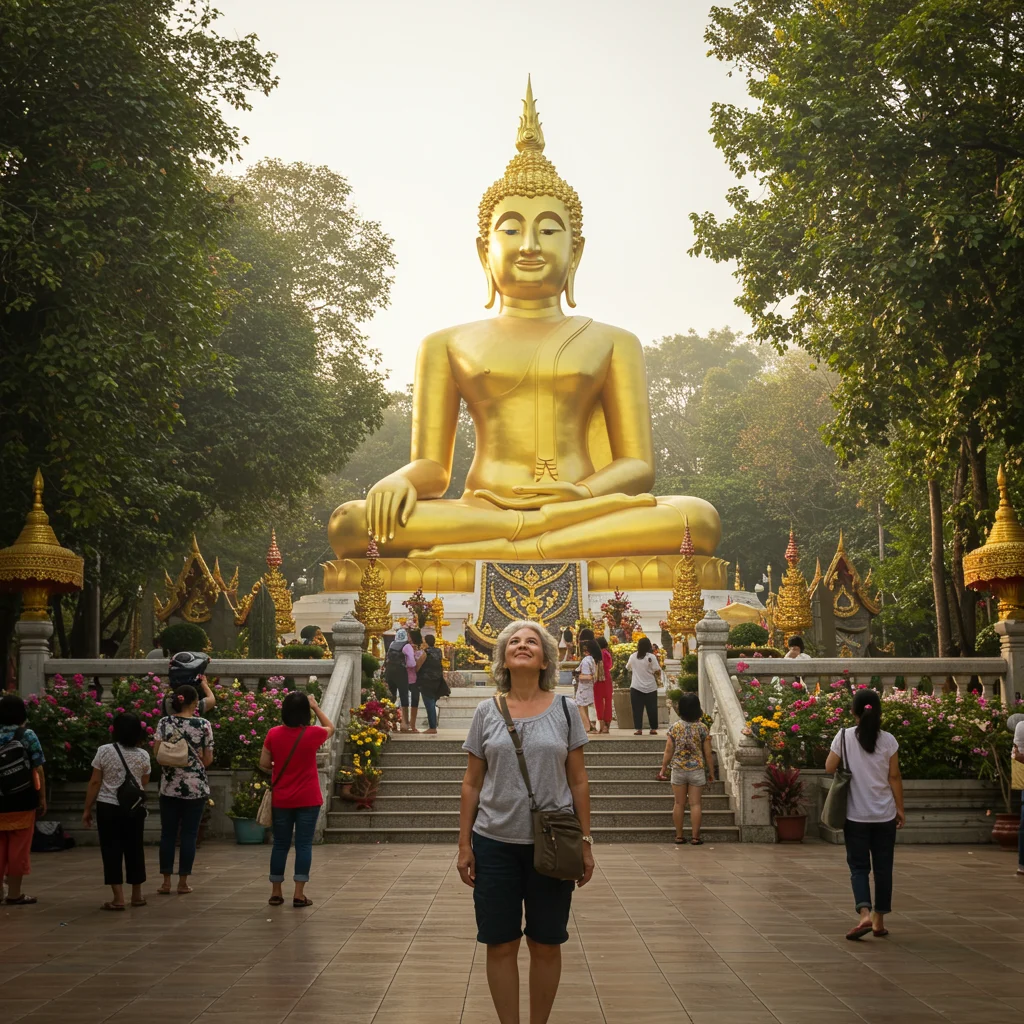
Guided Tours and Audio Guides
Guided tours are available in multiple languages, providing historical context and fascinating anecdotes. Audio guides can also be rented at the entrance, offering flexibility for solo travelers. For those who appreciate self-guided exploration, resources similar to those described in our post on audio guide tips for the Pantheon can be useful in planning your visit.
Photography Rules and Recommendations
Photography is allowed in most areas, but flash and tripods are usually prohibited inside the main shrine. Capture wide shots to convey the statue’s scale, but be mindful not to disrupt worshippers. The golden surface reflects light beautifully, especially in the early morning or late afternoon.
Meditation and Worship Opportunities
Designated meditation areas invite visitors to pause and reflect. Monks are often present to offer blessings or guidance. Participating in or observing rituals can provide a deeper appreciation for the spiritual significance of the Golden Buddha.
Festivals and Special Events at Wat Traimit
Wat Traimit is a hub of activity during major Buddhist festivals and community celebrations. These events offer a unique window into local culture and religious life.
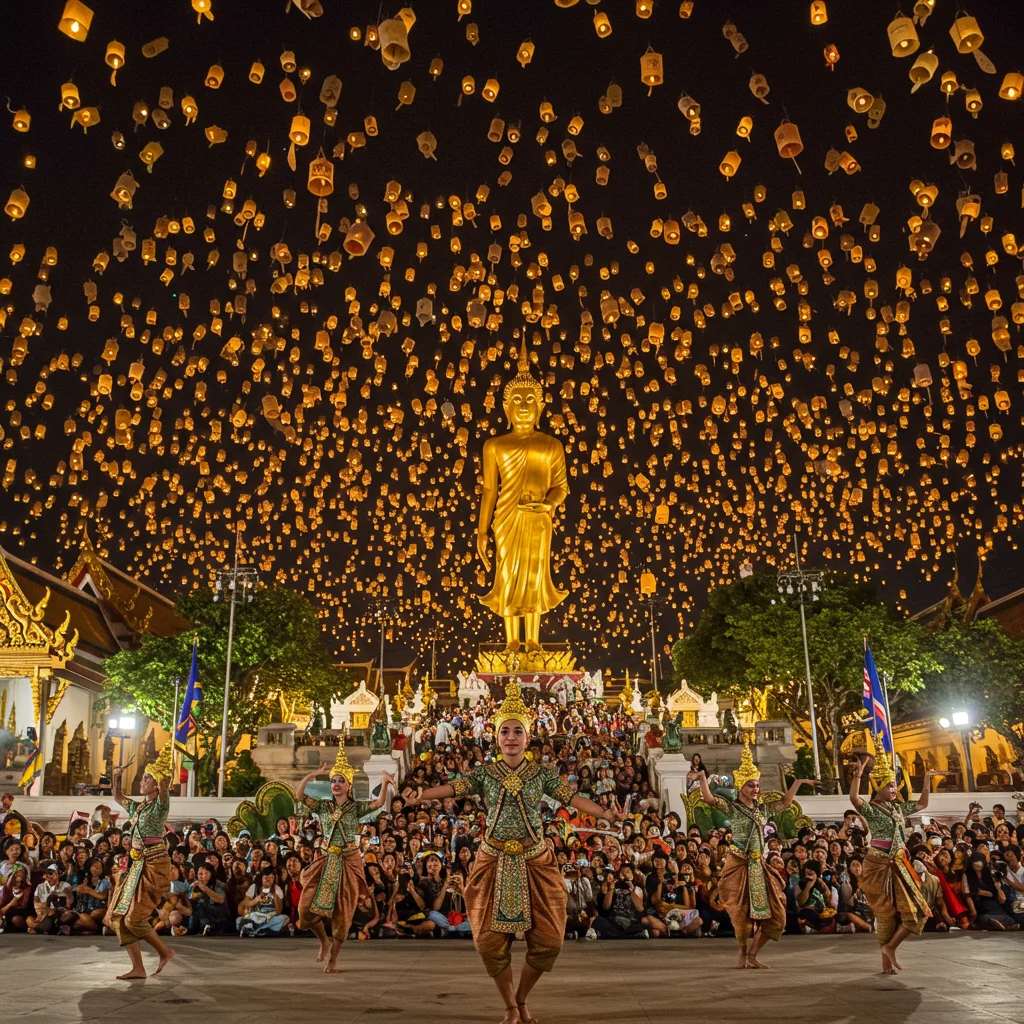
Major Religious Festivals
Key festivals such as Visakha Bucha Day and Makha Bucha Day draw large crowds, filling the temple grounds with colorful processions, candlelit ceremonies, and communal chants. The atmosphere is electric with devotion and unity.
Annual Ceremonies Involving the Golden Buddha
Each year, special rituals honor the Golden Buddha, including ceremonial cleansing and offerings. These ceremonies reinforce the statue’s role as a spiritual anchor for the community and highlight the ongoing care and respect it receives.
Local Community Events
In addition to religious festivals, Wat Traimit hosts cultural events, educational programs, and charity initiatives. These gatherings strengthen community ties and promote understanding between visitors and locals.
The Golden Buddha in Modern Media and Pop Culture
The Golden Buddha’s fame extends far beyond Thailand, appearing in films, documentaries, and promotional materials around the globe. Its image has become synonymous with Bangkok’s spiritual identity.

Appearances in Films and Documentaries
The statue has featured in numerous travel documentaries, cultural programs, and international news reports. Its dramatic history and visual splendor make it a compelling subject for filmmakers and journalists alike.
The Statue’s Role in Tourism Campaigns
Tourism boards frequently use the Golden Buddha’s likeness in advertising, drawing travelers eager to witness its beauty firsthand. The statue’s presence in global campaigns helps position Bangkok as a leading destination for cultural and spiritual tourism.
Legends, Myths, and Folklore
The Golden Buddha is surrounded by stories that capture the imagination. These legends add depth to its appeal and reinforce its mystical aura.

What Legends Surround the Golden Buddha?
Some tales suggest the statue possesses protective powers, or that its discovery was guided by divine intervention. Others recount dreams and visions experienced by those who have visited the temple. These stories continue to inspire awe and reverence.
Miracles and Anecdotes from Locals
Locals often share anecdotes of prayers answered and fortunes changed after paying respects to the Golden Buddha. While such accounts remain personal, they contribute to the statue’s reputation as a source of hope and inspiration.
As experts often say:
“Great monuments are not merely the work of hands, but the echo of countless hearts who believe in something greater than themselves.”
Conservation and Preservation Efforts
Maintaining the Golden Buddha’s brilliance and structural integrity is a continuous process, requiring careful stewardship and modern expertise.

How Is the Golden Buddha Maintained?
Regular cleaning, inspections, and controlled environmental conditions help preserve the statue’s luster. Skilled artisans and conservators monitor for signs of wear or damage, using specialized tools and techniques to address any issues.
Challenges in Preserving a Gold Statue
Gold, while resistant to corrosion, can be affected by humidity, pollution, and the touch of countless hands. Balancing accessibility with preservation is an ongoing challenge, especially given the statue’s popularity. Strict guidelines and modern conservation methods are essential to its long-term care.
International Recognition and UNESCO Status
The Golden Buddha’s global stature has brought it significant recognition, though its formal status continues to evolve.

Is the Golden Buddha a UNESCO World Heritage Site?
As of now, Wat Traimit and the Golden Buddha are not individually listed as UNESCO World Heritage Sites. However, the temple is frequently recommended for future inclusion, and its cultural value is widely acknowledged by scholars and heritage organizations.
Awards and Global Acknowledgments
The statue has received numerous accolades from tourism and cultural bodies, cementing its reputation as one of the world’s most important religious monuments. Its story is often cited in discussions of global heritage, alongside sites like the Acropolis and Parthenon in Athens.
Comparing the Golden Buddha to Other Famous Statues
The Golden Buddha’s uniqueness becomes even more apparent when compared to other celebrated Buddhist statues, both in Thailand and around the world.

How Does It Compare to Other Buddhist Statues in Thailand?
Thailand is home to several monumental Buddha images, such as the Reclining Buddha at Wat Pho and the Emerald Buddha at the Grand Palace. However, the Golden Buddha stands apart due to its solid gold construction and dramatic rediscovery story.
Notable Golden Buddha Statues Worldwide
Other countries boast impressive Buddha statues—like the Leshan Giant Buddha in China and the Shwedagon Pagoda’s images in Myanmar—but few can match the Golden Buddha’s combination of historical intrigue, material value, and spiritual resonance.
Frequently Asked Questions About the Golden Buddha
Many visitors arrive with questions about the statue’s history, composition, and how best to experience its majesty. Here we address some of the most common queries.

Is the Golden Buddha Solid Gold?
Yes, the statue is crafted from solid gold, estimated at 18 karats. Its nine sections fit together seamlessly, and the total weight is over five tons. This makes it the largest known solid gold statue in the world.
Can You Touch the Golden Buddha?
Out of respect for its sanctity and for preservation reasons, visitors are not permitted to touch the statue. Barriers and staff help maintain a respectful distance, ensuring the image remains pristine for future generations.
What Is the Best Way to Experience the Golden Buddha?
For a truly meaningful visit, arrive early, join a guided tour, and take time to observe both the statue and the rituals of local worshippers. Quiet reflection in the temple’s calm setting enhances the spiritual impact of the experience.
Nearby Attractions to Visit After the Golden Buddha
The area surrounding Wat Traimit is rich with additional attractions, making it easy to extend your exploration after visiting the Golden Buddha.

Exploring Bangkok’s Chinatown
Just outside the temple gates, Bangkok’s Chinatown beckons with its lively markets, street food stalls, and historic shophouses. The district’s vibrant sights, sounds, and flavors offer a sensory feast and a fascinating glimpse into the city’s multicultural heritage.
Other Temples in the Vicinity
Several other noteworthy temples are within walking distance, including Wat Mangkon Kamalawat, a major center of Chinese Buddhism. Each temple has its own unique atmosphere and traditions, enriching your understanding of local religious life.
Recommended Local Eateries and Markets
After a morning of spiritual reflection, treat yourself to a meal at one of Chinatown’s renowned noodle shops or seafood restaurants. Nearby markets offer a dazzling array of fresh produce, spices, and souvenirs—perfect for sampling authentic Thai and Chinese flavors.
Travel Tips for First-Time Visitors
To make the most of your journey to the Golden Buddha, keep these practical tips in mind.
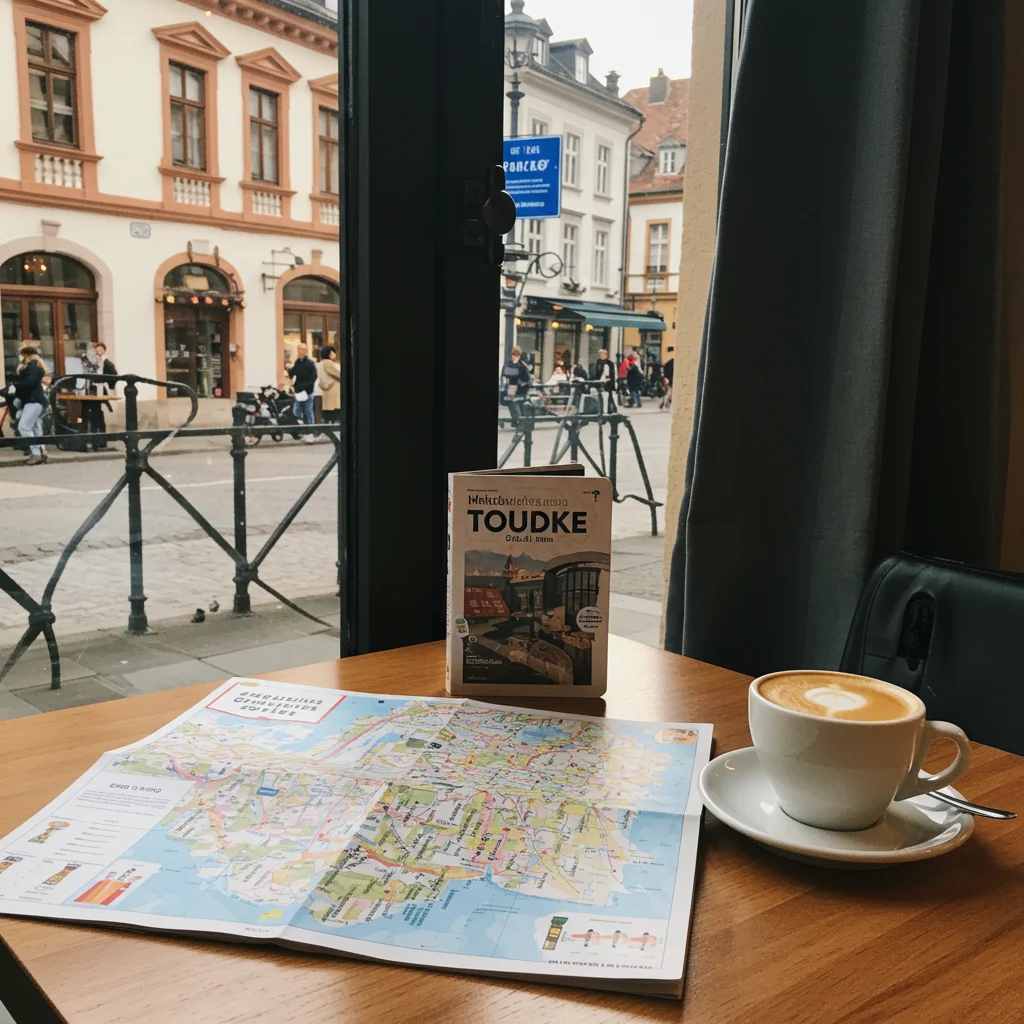
Cultural Dos and Don’ts
- Always greet monks and elders with a respectful wai (palms pressed together).
- Avoid pointing your feet at religious images or people.
- Refrain from loud conversations or disruptive behavior in temple areas.
Safety and Security in the Area
The neighborhood around Wat Traimit is generally safe, but it is wise to keep an eye on personal belongings in crowded areas. Use reputable transportation, and be cautious when crossing busy streets. For those interested in exploring ancient landmarks in other cities, our insights on navigating the Colosseum and Palatine Hill in Rome may also prove helpful.
How to Book on Viator
Booking your visit to the Golden Buddha and other Bangkok attractions is simple with Viator. Their platform offers a wide range of tours, skip-the-line tickets, and cultural experiences, all curated for convenience and quality. To book activities, simply visit their website, browse by destination or interest, and secure your spot in just a few clicks. Viator’s user-friendly system allows you to compare options, read verified reviews, and enjoy secure payment methods. Whether you’re planning a group tour or a private visit, Viator is a trusted resource for travelers worldwide.

Conclusion: Why the Golden Buddha Is a Must-See in Bangkok
The Golden Buddha stands as a beacon of spiritual devotion, artistic excellence, and national pride. Its story—marked by mystery, resilience, and rediscovery—continues to inspire visitors from every corner of the globe. As you plan your journey, remember that a visit to this iconic statue is not just a sightseeing opportunity, but a chance to connect with the soul of Thailand. For more inspiration, travel tips, and in-depth destination guides, we invite you to explore Izase at https://izase.com.
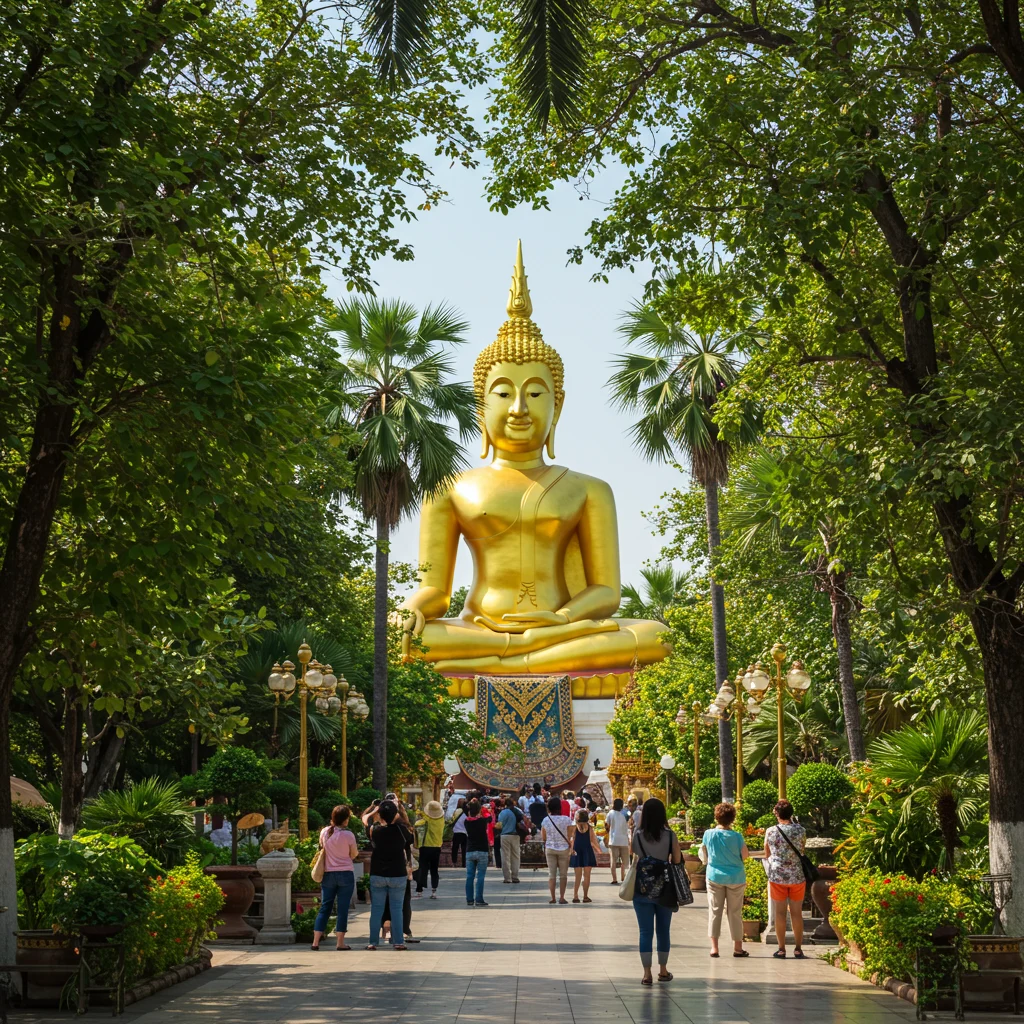
Further Reading and Resources
Recommended Books and Articles
- “Buddhism in Thailand: Its Past and Present” by Karuna Kusalasaya
- “The Art and Architecture of Thailand” by H. R. H. Princess Maha Chakri Sirindhorn
- Articles from Thai heritage journals and travel magazines
Official Websites and Visitor Information
- Wat Traimit Official Website
- Tourism Authority of Thailand: www.tourismthailand.org
- Bangkok Metropolitan Administration: www.bangkok.go.th
Disclaimer: This information is accurate to the best of our knowledge; however, there may be changes or mistakes. Please verify exact details on the Viator booking page.



